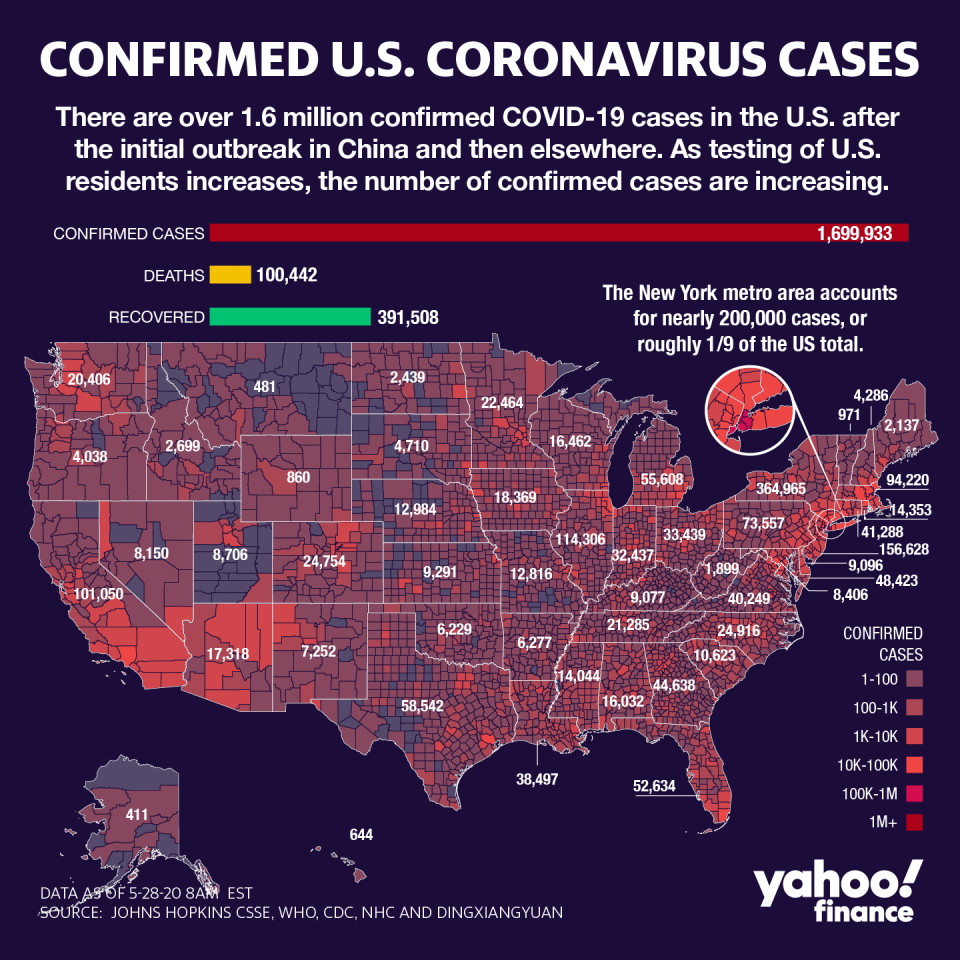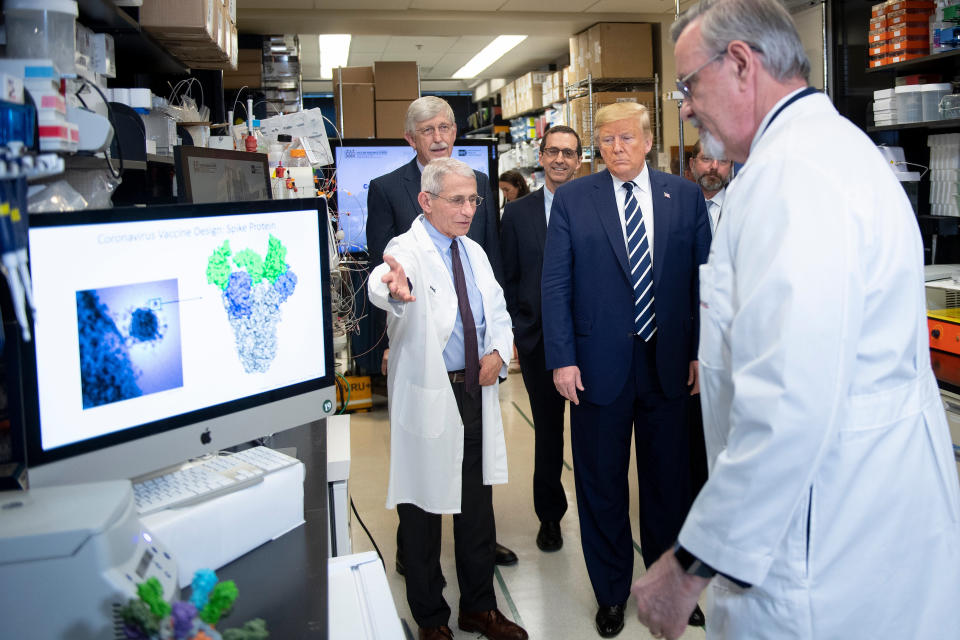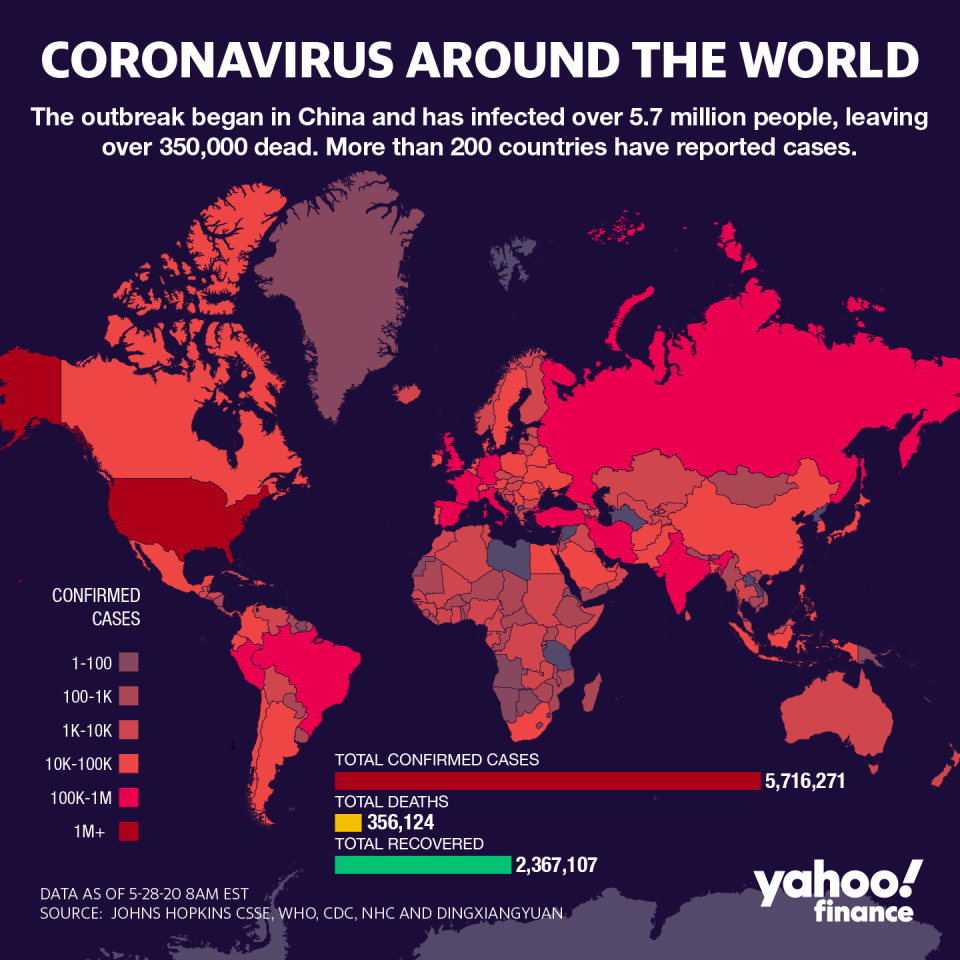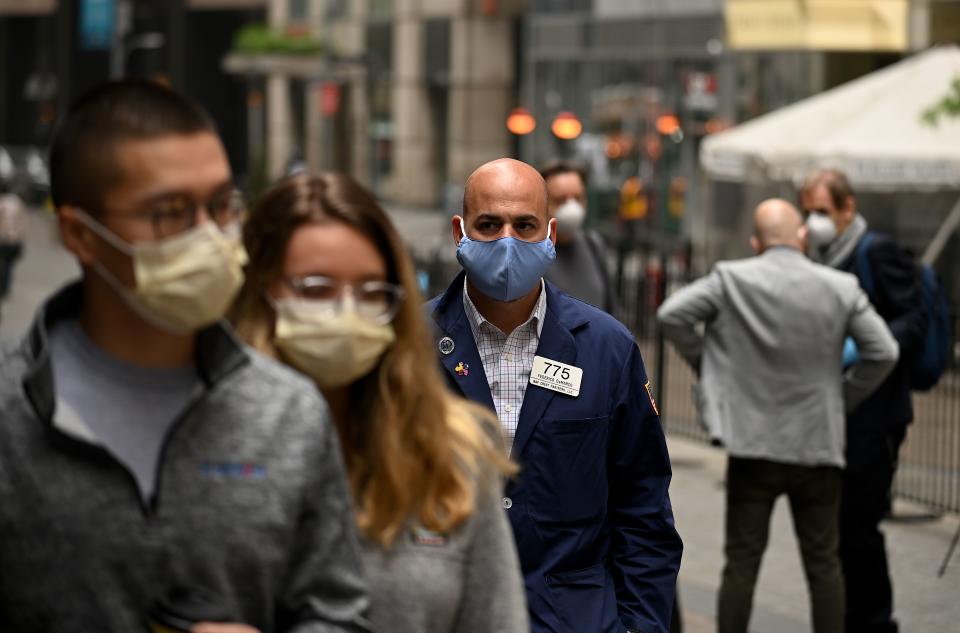ER doctor: 12-18 month coronavirus vaccine timeline 'is extremely optimistic'
As the fallout from the coronavirus pandemic continues, the search for a vaccine is not slowing down.
Back in March, President Trump stated that a vaccine could be available in three to four months. Dr. Anthony Fauci, the director of the National Institute of Allergy and Infectious Diseases (NIAID), said that a 12 to 18 month timeline was more realistic.
But even that timeframe could be overstating it, according to Dr. Leana Wen, an emergency physician and visiting professor at the George Washington University School of Public Health.
“I think 12 to 18 months is extremely optimistic,” Wen said recently on Yahoo Finance’s The Ticker. “I hope that all the pieces align. It will certainly be the fastest that we’ve ever done this.”

‘You want to make sure ... it’s safe’
Dr. Wen is not the only health official to express skepticism at the 12-18 month timeline. Merck (MRK) CEO Ken Frazier has called that vaccine schedule “very aggressive.”
“It is not something I would put out there that I would want to hold Merck to,” he told the Financial Times. “You want to make sure that when you put a vaccine into millions, if not billions of people, it is safe.”
Health care professionals have indicated that 2021 is a more realistic timeframe, but only if there are no hiccups along the way. Vaccines typically need to be tested and candidates need to be followed closely over a set period of time to see if there are significant side effects.
“I think it’s going to take a lot longer than that,” Dr. Rick Bright, former director of Biomedical Advanced Research and Development Authority (BARDA), who had been working towards finding a vaccine until he filed a whistleblower complaint, said during a congressional hearing.

Typically, the development of a vaccine can take up to 10 years, he said. It’s because of that fact that Dr. Wen said the U.S. should be prepared “for the long haul.”
“We also have to contend with the fact that maybe the vaccine is not going to be 100%,” Wen said. “Maybe we need multiple doses of the vaccine. Maybe it needs to be given every year or every other year. And so, I think all these factors have to be taken into consideration, as we think about the fact that for now, we are living with this virus. And we have to mitigate — reduce that risk as much as we can.”
Vaccine candidates
According to Dr. Wen, the public should be prepared for “multiple vaccine candidates” being developed and tested.
There are currently 10 pharmaceutical companies working on a coronavirus vaccine — Altimmune (ALT), BioNTech (BNTX) and Pfizer (PFE), GlaxoSmithKline (GSK), Heat Biologics (HTBX), Inovio Pharmaceuticals (INO), Johnson & Johnson (JNJ), Moderna (MRNA), Novavax (NVAX), Sanofi (SNY), and Vaxart (VXRT).
![Dr. Sonia Macieiewski (R) and Dr. Nita Patel, Director of Antibody discovery and Vaccine development, look at a sample of a respiratory virus at Novavax labs in Gaithersburg, Maryland on March 20, 2020, one of the labs developing a vaccine for the coronavirus, COVID-19. (Photo by ANDREW CABALLERO-REYNOLDS / AFP) / The erroneous mention[s] appearing in the metadata of this photo by ANDREW CABALLERO-REYNOLDS has been modified in AFP systems in the following manner: [Gaithersburg] instead of [Rockville]. Please immediately remove the erroneous mention[s] from all your online services and delete it (them) from your servers. If you have been authorized by AFP to distribute it (them) to third parties, please ensure that the same actions are carried out by them. Failure to promptly comply with these instructions will entail liability on your part for any continued or post notification usage. Therefore we thank you very much for all your attention and prompt action. We are sorry for the inconvenience this notification may cause and remain at your disposal for any further information you may require. (Photo by ANDREW CABALLERO-REYNOLDS/AFP via Getty Images)](https://s.yimg.com/ny/api/res/1.2/n3f4VT6jtoMZ5KOZf3gaiQ--/YXBwaWQ9aGlnaGxhbmRlcjt3PTk2MDtoPTY2Mw--/https://media-mbst-pub-ue1.s3.amazonaws.com/creatr-images/2020-05/ee7eb5c0-a0f3-11ea-ba26-f6bf42e037e4)
Only some of these have reached clinical trials for their vaccines, but have not yielded significant results yet.
“I certainly hope that we get to the place that we find a candidate that is both safe and effective, and that manufacturing can begin in the meantime,” Wen said. “It will take a long time, not just to find safety and efficacy and do those studies, but also to manufacture hundreds of millions of doses and get those delivered to people.”
The manufacturing of these vaccines poses another challenge. There would need to be over 331,000,000 doses available just to meet the U.S. population. There are 8 billion people worldwide. Therefore, the enormous demand would be overwhelming for one company to produce.

‘Not in any way out of the woods’
Until a coronavirus vaccine is created and fully tested, there is “no chance” of keeping the virus contained, Wen said, unless other public health measures are implemented.
“We are not in any way out of the woods here in the U.S. at all,” she said. “We’re seeing a plateau in the number of cases as a whole in the U.S. But actually, we’re also seeing spikes in communities all around the country. And that plateau, even if it stays that way, is still at a very high level, meaning a high number of hospitalizations, suffering, and death, unfortunately.”
There are currently 20 states experiencing an increase in the number of coronavirus cases. Most of these states — including Alabama, Florida, and Georgia — were among the first ones to reopen their economies over the last month.

“We’re at this point where we are reopening despite it not actually being safe to do so, and we don’t have the capabilities yet established to do so,” Wen said. “But if that’s the case, and people are going back to work anyway, we have to do our best to reduce the harm for workers, reduce the harm for students, and really for all of us. So while we get that testing, tracing, and isolation capacity under control, reduce our own risk.”
She continued: “Think about the fact that just because things are reopened, doesn’t mean that we have to do it all. If we really have to get something done, like getting our hair cut, don’t also go to a restaurant. If we have to go back to work, do that. But don’t go about your normal social interactions. Keep that physical distancing, wash your hands, do all these public health hygiene best practices to reduce the risk to ourselves and one another.”
Adriana is a reporter and editor for Yahoo Finance. Follow her on Twitter @adrianambells.
READ MORE:
Hospitals itch to ramp up elective surgery amid coronavirus profit crunch
Reopening economy 'will have a much smaller-than-expected impact,' experts argue
Read the latest financial and business news from Yahoo Finance
Follow Yahoo Finance on Twitter, Facebook, Instagram, Flipboard, SmartNews, LinkedIn, YouTube, and reddit.
